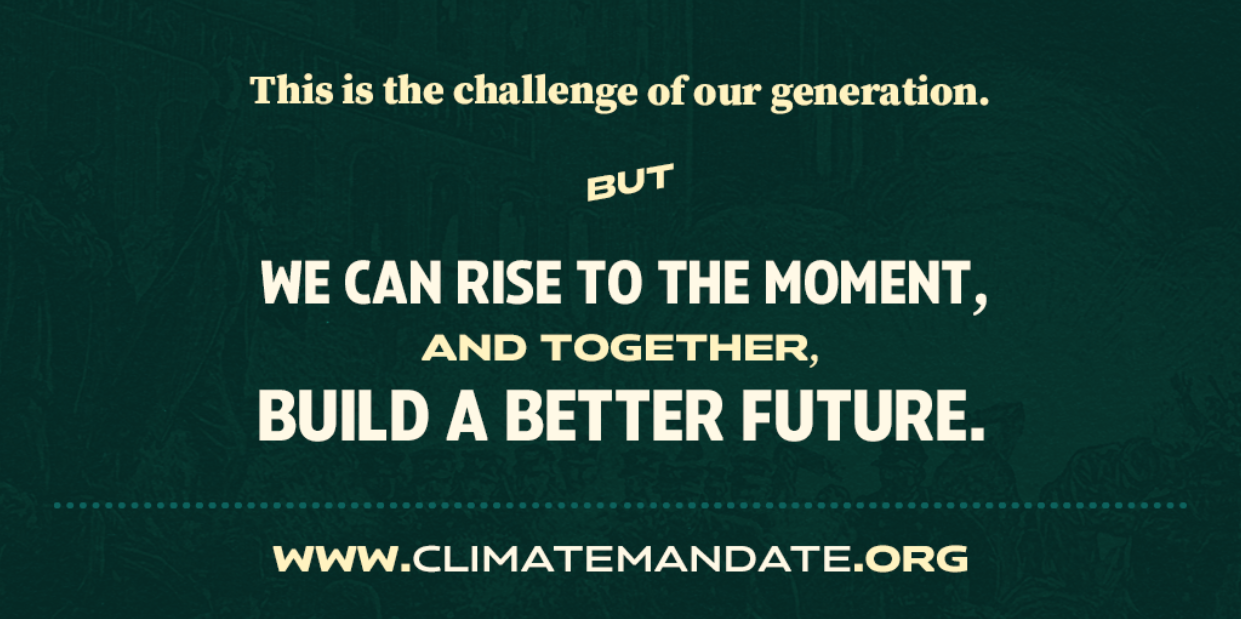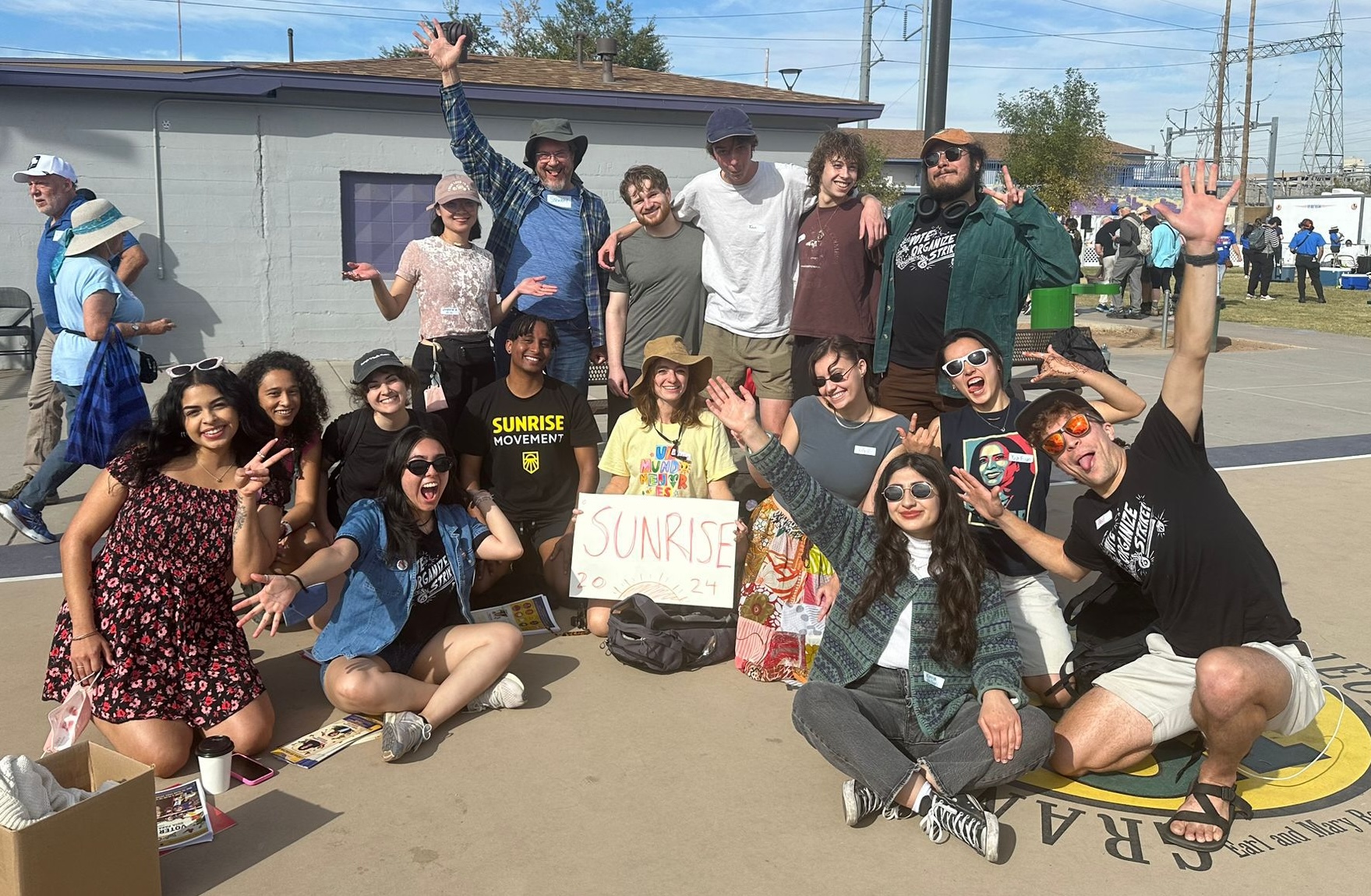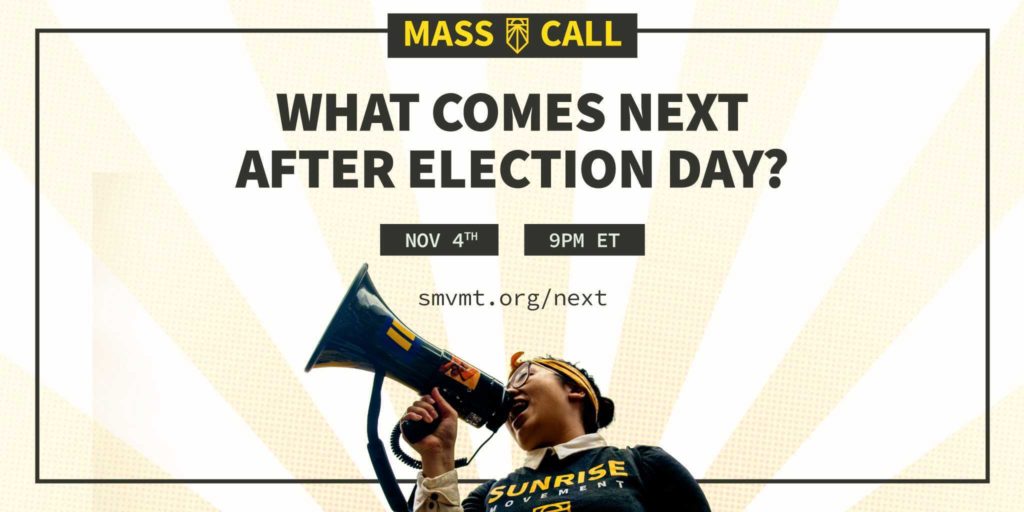If you’re like most young people, 2020 has felt like a complete and unmitigated disaster. It’s been the year so bad that a fleet of murder hornets appeared, then disappeared somehow, without any of us noticing.
We’ve spent most of the year trapped by the COVID-19 pandemic. Trapped in isolation within our homes, trying to avoid the virus and keep our loved ones safe. Trapped in jobs that didn’t seem to care if they exposed us every day, with insufficient protections, all for a wage that barely paid our bills to begin with. Trapped in a year that seems like it will never come to an end.
Millions of us lost our jobs and struggled to get by, unsure how to pay for rent and groceries, let alone our student debt. All the while, the wealthiest billionaires saw their wealth skyrocket, revealing the perverse inequality baked into our economy. While our world collapsed, they added to their dragon’s hoard.
And the government that should have stepped in to help? Between an incompetent and vain president who ignored science, an obstructionist Senate Majority Leader, and a Democratic House Majority afraid to be bold, the American people have largely gone unsupported.
Worse, there’s a lingering sense that this chaos is just a preview of our future. COVID has shined a harsh spotlight on the fault lines running through the foundations of our society, from our health infrastructure to our economy. It’s more clear than ever before that we’re not prepared—medically or socially—for society-wide disasters.
As if that weren’t concerning enough, we are careening head first into the climate catastrophe, which threatens to crack those foundations wide open.
Just this summer:
- Following a decade of drought, the West US blazed uncontrollably for weeks, shattering fire records.
- Record hurricanes bombarded the Gulf Coast and the Atlantic states.
- Freak floods and a storm dubbed a “land hurricane” ravaged the Midwest.
And, while the pandemic will begin to subside as the vaccine rolls out, climate change is only getting worse. We can’t afford to fail our climate change response as we just did our COVID response.
Climate change is the single greatest threat humanity has ever faced. We can stop it, but it’s going to take a society-wide mobilization. Climate Mandate 2020.
Biden’s Climate Mandate
Going into 2021, president Biden will inherit these disasters. He will take over the worst economic recession since the Great Depression and take office as the last president able to act in time to avert irreversible climate change.
Biden has a unique opportunity to tackle both crises simultaneously—rebuilding our economy while averting climate change—with the same solution: a Green New Deal.
Biden ran on a campaign pledge to create millions of good-paying jobs and put us on a path to achieving a carbon-pollution free electric sector by 2035. Now he just has to do it.
This would be a massive industrial mobilization the likes of which we haven’t seen since the last time our society was on the verge of collapse: the 1930s.
We can learn from what happened then.
Trump and Hoover—Two Failed Presidents
In 1929, the stock market crashed, sending the economy into a free fall, with one in four Americans unemployed. As the Great Depression roiled on, then-president Herbert Hoover refused to pursue government aid, which he saw as “handouts,” and instead praised American “rugged individualism” as the path out.
Rather than admit the severity of the crisis, he took to the air to say, “any lack of confidence in the economic future or the strength of business in the United States is foolish.” In 1930, Hoover said, “The worst is behind us”—words Trump echoed in April. History would go on to prove them both wrong.
At the same time, unsustainable farming practices had completely destroyed the Great Plains across Oklahoma, Texas, Kansas, New Mexico, and Colorado. Dried up topsoil was torn away by winds and lifted into massive “black blizzards” that ravaged the region, in some cases carried all the way to the East coast. These storms left a wake of respiratory ailments, including coughing spasms, shortness of breath, asthma, bronchitis, and influenza. Many developed silicosis, a condition normally found in underground miners. Hundreds died of the so-called “brown plague,” dust pneumonia.
It was an economic and ecological catastrophe. At the same time, fascism was on the rise around the world, ultimately sparking World War II. Sound familiar?
WHEN FDR TOOK OFFICE AT THE BEGINNING OF THE GREAT DEPRESSION, HE STOOD AT THE CROSSROADS: CONTINUE BUSINESS AS USUAL, OR MOBILIZE EVERY GOVERNMENT POWER AT HIS DISPOSAL TO HELP WORKING AMERICANS.
In the face of massive unemployment and ecological destruction, FDR needed to rebuild our economy, repair the environment, and revive trust in the potential of government. To do that, he needed to think big. He famously pledged himself to “a new deal for the American people,” and that work fundamentally reshaped American society.
The New Deal was a Green New Deal
As a part of the New Deal, FDR established a number of federal jobs programs, which put Americans to work upgrading or building the infrastructure we needed—from buildings and homes, to roads and bridges, to dams and power. This is the same work we need today.
As we consider today the monumental task of overhauling our energy infrastructure away from fossil fuels and onto clean energy, as well as overhauling the rest of our infrastructure to be more energy efficient, we can learn a lot from the federal programs FDR instituted.
Civilian Conservation Corps → Climate Change Corps
Then
[IMAGE HERE WITH DESCRIPTION AS BELOW]
The Civilian Conservation Corps was a federal jobs program that put young people to work on public lands, tending to forests and planting trees, and responding to natural emergencies like forest fires and floods.
Now
Every region of the United States faces escalated natural disasters (courtesy of climate change): fires on the West coast, floods in the Midwest, hurricanes in the Gulf and the East Coast. A renewed Civilian Conservation Corps (perhaps renamed Climate Change Corps) could create jobs working to prevent or respond to those disasters, rebuilding trust in the words Ronald Reagan maligned: “I’m from the government, and I’m here to help.”
When the Civilian Conservation Corps launched, 300,000 young people signed up in the first 6 months. Many of them had NEVER held jobs before, and the CCC lifted them out of poverty.
To wrangle with a pandemic-induced recession, we can offer people a unique job: saving the world from climate change.
[IMAGE HERE WITH DESCRIPTION AS BELOW]
Civil Works Administration/Works Progress Administration
Then
The Civil Works Administration was a short-term federal jobs program that employed 4.5 million workers in construction jobs improving or constructing infrastructure like buildings and bridges.
It was so popular that, after its expiration, it was replaced by the Works Progress Administration, which would go on to employ 8.5 million workers, who built more than:
- 650,000 miles of new and improved roads
- 10,000 buildings including houses and schools
- 16,000 miles of new water lines
Now
America’s transit and infrastructure consistently ranks among the worst compared to countries of similar wealth. Our roads and bridges are crumbling and our public housing supply is inadequate, while existing units are unhealthy and outdated.
Housing and transportation combined account for almost 50% of US emissions. Upgrading the energy efficiency of our nation’s housing and roads would go a long way toward meeting our necessary climate change goals.
Rural Electrification Administration → Rural Broadband Administration (7037)
Then
The Rural Electrification Administration rolled out electric power to rural areas across the United States. Before the REA, fewer than 11% of US farms had electric power. By the end of the program, 97% did. The program was extremely cost efficient as well, costing less than $825 per mile (private power companies claimed it would cost $1500-$2000 per mile).
Now
Rural areas largely have access to electricity. But when it comes to the dominant utility of the 21st century—internet—rural areas have been left behind. A newly established Rural Broadband Administration could expand internet access to underserved communities, while upgrading our electric grid as we transition away from fossil fuels to clean energy.
National Youth Administration (Executive Order 7806)
Then
Spearheaded by First Lady Eleanor Roosevelt, the National Youth Administration was a work and education program for young people which paid college students and other young people for part-time work, including job training.
Now
Young people have been hardest hit by the economic impacts of the recession, with the unemployment rate of workers 16-29 peaking above 30%. While college was relatively affordable decades ago, the costs have since ballooned.
President Biden should work to make college affordable—and ultimately free—for all who wish to attend, and forgive the skyrocketing student loan debt crisis to prevent the younger generation’s economic prospects from being underwater for further decades.
New Deal Executive Orders
While much of the New Deal was done in coordination with Congress, FDR exercised a level of executive power never before seen in the US, and never seen since.
His work included a record-shattering 3728 executive orders. In fact, each of the programs detailed above was established at least partially via executive order, not to mention the many regulations and appointments made to oversee the New Deal.
[DATA VISUALIZATION HERE WITH DESCRIPTION AS BELOW]
On the campaign trail, Joe Biden said he wanted to be a Rooseveltian president.
To live up to that, he needs to adopt a central mandate that unites the work of our government to meet the existential crises of our time.
At a time when millions are out of work, we need a federal office with the power and access to coordinate federal agencies in a society-wide mobilization that employs millions, decarbonizing our economy.
[IMAGE HERE WITH DESCRIPTION AS BELOW]
Imagine the possibilities if every department in the Cabinet worked together:
- Millions of new energy-efficient public housing units built by the Department of Housing and Urban Development…
- …connected to the region around them by efficient roads and well-developed public transit under the Secretary of Transportation…
- …all integrated into an expanded, fully green electrical grid overseen by the Department of Energy…
- …while the workers on each project are protected by an aggressive Department of Labor.
With our entire executive branch working in tandem, we can meet the challenge of climate change and create millions of good jobs.
[IMAGE HERE WITH DESCRIPTION AS BELOW]
Where the New Deal went wrong
Joe Biden should also learn from FDR’s mistakes.
For electoral support, FDR compromised with racist Southern Democrats, ignoring or in some cases worsening racial segregation. That can’t happen today. Biden must do the reverse, investing first and most in communities that are on the frontlines of environmental injustice.
That requires having the right people at the table. Biden’s administration can’t be dominated by corporate interests; it needs to be filled with organizers who have a history of fighting for working people and for justice.
Biden Must Declare a Climate Emergency
In 1933, Roosevelt invoked the National Emergencies Act to act in the face of the Great Depression.
Biden should follow suit.
This weekend, Biden said “Just like we need a unified national response to COVID-19, we need a unified national response to climate change. We need to meet the moment with the urgency it demands as we would during any national emergency.“
We agree. For starters, he should declare the climate crisis a national emergency, invoking the NEA (as FDR did), and the Defense Production Act. This isn’t politics; it’s reality. We are in a crisis, and emergency alarms have been blaring for some time. It’s time to act like it.
If you’ve been following the news about COVID, you’ll know that – after ongoing pressure – Trump leveraged the Defense Production Act (albeit not very well) to secure medical equipment during the pandemic, and Biden is considering doing so to speed vaccine production and distribution (he definitely should).
We can go much farther.
The Defense Production Act can be used to spark a “clean energy revolution”, to use the words on Biden’s climate plan.
We need a federal job creation plan that puts people to work:
- building a comprehensive renewable energy grid
- establishing clean energy public transportation systems
- retrofitting buildings, roads, and highways for energy efficiency
- responding to climate emergencies, saving families caught in the path of wildfires and hurricanes, and helping them rebuild or relocate in the aftermath.
- creating systems of climate resilience in communities susceptible to climate emergencies.
- constructing energy efficient affordable or public housing across the nation.
- and more.
This isn’t the time for tweaks and regulations. It’s the time to turn the full eye of our government, industry, and society towards averting climate change, before it’s too late for humanity.
The Role of the Movement
This is Joe Biden’s FDR moment. If he meets it, we can avert climate change and create millions of good jobs with the same plan, leaving us with cleaner air and water and soil.
But it’s not going to just happen by itself. We have to fight for it.
Like Biden, FDR was elected and pushed into action by popular movements demanding change in a time of crisis. FDR wasn’t elected a radical, but he was pushed by movement organizers into action. Once, after meeting with a group of activists, he said, “I agree with you, now go out and make me do it.”
That’s our job: to continue laying on so much public pressure that Biden—and Congress—will not deprioritize the urgency of climate change, the necessity of bold action.
When he first met with his Labor Secretary, Frances Perkins, she presented Roosevelt with a series of progressive proposals (including Social Security and a minimum wage), and said, “Nothing like this has ever been done in the United States before. You know that, don’t you?”
That’s our job: to dream up the unthinkable and fight for it. Frances Perkins’ statement holds true now. Nothing like this has ever been done in the United States before.
As a result of the pressure placed on FDR over his terms, he lived up to her prophecy and changed the nature of American government.
It’s up to us to make sure Biden continues to live up to this moment. This month’s progressive environmental picks (Gina McCarthy and Ali Zaidi in particular) are a good first step, and the new appointees to the National Economic Council are also promising. Having one of the earliest Green New Deal cosponsors as Secretary of the Interior certainly won’t hurt.
But the work can’t stop there.
We’re gearing up to mobilize for the organizing that will bring about the next steps. The Decade of the Green New Deal starts now. And we need you.
Join us Tuesday, December 22, from 8-10pm EST for our GND year 1 training.





